Human Orbital Spaceflights
![]()
International Flight No. 180STS-73Columbia (18)72nd Space Shuttle missionUSA |
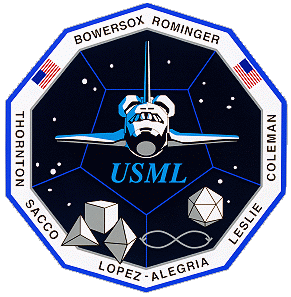 |
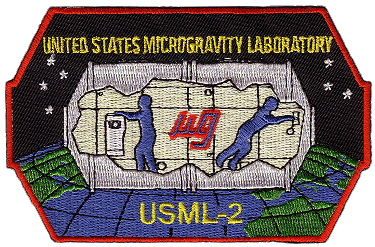 |
|
Source: www.spacepatches.nl |
![]()
Launch, orbit and landing data
walkout photo |
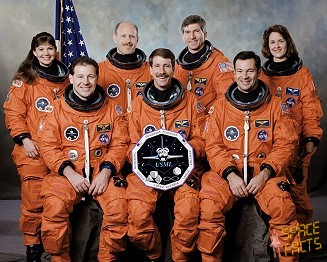 |
||||||||||||||||||||||||||||
alternative crew photo |
|||||||||||||||||||||||||||||
alternative crew photo |
Crew
| No. | Surname | Given names | Position | Flight No. | Duration | Orbits | |
| 1 | Bowersox | Kenneth Dwane "Sox" | CDR | 3 | 15d 21h 52m 21s | 255 | |
| 2 | Rominger | Kent Vernon | PLT | 1 | 15d 21h 52m 21s | 255 | |
| 3 | Coleman | Catherine Grace "Cady" | MS-1, EV-2 | 1 | 15d 21h 52m 21s | 255 | |
| 4 | Lopez-Alegria | Michael Eladio "LA" | MS-2, EV1, FE | 1 | 15d 21h 52m 21s | 255 | |
| 5 | Thornton | Kathryn Cordell Ryan | MS-3, PLC | 4 | 15d 21h 52m 21s | 255 | |
| 6 | Leslie | Fred Weldon | PS-1 | 1 | 15d 21h 52m 21s | 255 | |
| 7 | Sacco | Albert, Jr. "Al" | PS-2 | 1 | 15d 21h 52m 21s | 255 |
Crew seating arrangement
|
 |
|
||||||||||||||||||||||||||||||||
Backup Crew
|
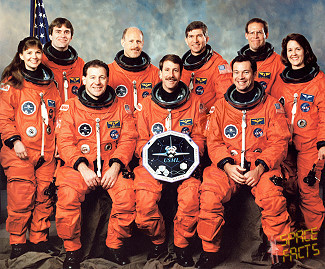 |
|||||||||||||||
Hardware
| Orbiter : | OV-102 (18.) |
| SSME (1 / 2 / 3): | 2037 (1.) / 2031 (13.) / 2038 (1.) |
| SRB: | BI-075 / RSRM 50 |
| ET: | ET-73 (LWT-67) |
| OMS Pod: | Left Pod 05 (7.) / Right Pod 01 (22.) |
| FWD RCS Pod: | FRC 2 (18.) |
| RMS: | - |
| EMU: | EMU No. 2032 (PLSS No. 1003) / EMU No. 2034 (PLSS No. 1011) |
Flight
|
Launch from Cape Canaveral (KSC) and
landing on Cape Canaveral (KSC), Runway 33. Launch was originally scheduled for September 25, 1995 but endured six scrubbed launch attempts before its October 20, 1995 lift off. STS-73 and STS-61C both carry the distinction of being tied for the most scrubbed launches, each having launched on their seventh attempt. Liftoff was originally set for September 25, 1995 was scrubbed shortly after tanking began, when a hydrogen leak was detected in main engine No. 1 main fuel valve. The valve was replaced at pad. Launch was re-set for October 05, 1995, but weather effects due to Hurricane Opal led to L-1 day decision to postpone launch one day to October 06, 1995. October 06, 1995 launch attempt was scrubbed prior to external tank loading when it was determined that hydraulic fluid had been inadvertently drained from hydraulic system 1 following the main engine No. 1 fuel valve replacement. Compressibility test demonstrated system was satisfactory for launch, and liftoff re-set to occur October 07, 1995. Launch attempt October 07, 1995 was scrubbed at T-20 seconds when master events controller 1 (MEC 1) failed to operate properly and mission managers determined it needed to be replaced. Launch was reset for October 14, 1995. Launch was then re-scheduled to October 15, 1995 to allow additional time to inspect the main engine oxidizer ducts as a result of finding a crack in a test engine oxidizer duct at Stennis. Also, during this delay, a faulty general-purpose computer 1 (GPC 1) had to be replaced. Launch attempt on October 15, 1995 was postponed at T-5 minutes due to low clouds and rain. Launch was tentatively re-set to October 19, 1995 pending a successful Atlas launch October 18, 1995; however, Atlas launch was delayed and STS-73 launch moved to October 20, 1995. The countdown to liftoff October 20, 1995 was delayed three minutes due to range computer glitch. The second United States Microgravity Laboratory (USML-2) Spacelab mission was the prime payload on STS-73. The 16-day flight continued a cooperative effort of the U.S. government, universities and industry to push back the frontiers of science and technology in "microgravity", the near-weightless environment of space. Some of the experiments carried on the USML-2 payload were suggested by the results of the first USML mission that flew aboard Columbia in 1992 during STS-50. The USML-1 mission provided new insights into theoretical models of fluid physics, the role of gravity in combustion and flame spreading, and how gravity affects the formation of semiconductor crystals. Data collected from several protein crystals grown on USML-1 enabled scientists to determine the molecular structures of those proteins. Experiment operations conducted around the clock on this flight, with the astronauts divided into two teams. Kenneth Bowersox, Kent Rominger, Kathryn Thornton and Albert Sacco were the "Red Team". The "Blue Team" consisted of Catherine Coleman, Michael Lopez-Alegria and Fred Leslie. USML-2 experiment racks were housed in a 23-foot Spacelab module inside the Shuttle Columbia's cargo bay. The laboratory module was pressurized so researchers can work in their shirtsleeves instead of bulky space suits, and it was furnished with much of the same kind of equipment that they would use in their labs back home. USML-2 Experiments included: the Surface Tension Driven Convection Experiment (STDCE), the Drop Physics Module, the Drop Dynamics Experiment; the Science and Technology of Surface-Controlled Phenomena experiment; the Geophysical Fluid Flow Cell Experiment; the Crystal Growth Furnace, the Orbital Processing of High Quality Cadmium Zinc Telluride Compound Semiconductors experiment; the Study of Dopant Segregation Behavior During the Crystal Growth of Gallium Arsenide (GaAs) in Microgravity experiment; the Crystal Growth of Selected II-VI Semiconducting Alloys by Directional Solidification experiment; the Vapor Transport Crystal Growth of Mercury Cadmium Tellurida in Microgravity experiment; the Zeolite Crystal Growth Furnace (ZCG), the Interface Configuration Experiment (ICE), the Oscillatory Thermocapillary Flow Experiment; the Fiber Supported Droplet Combustion Experiment; the Particle Dispersion Experiment; the Single-Locker Protein Crystal Growth experiment; (including the Protein Crystallization Apparatus for Microgravity (PCAM) and the Diffusion-controlled Crystallization Apparatus for Microgravity (DCAM)); the Crystal Growth by Liquid-Liquid Diffusion, the Commercial Protein Crystal Growth experiment; the Advanced Protein Crystallization Facility, Crystallization of Apocrystacyanin C experiment; Crystal Structure Analysis of the Bacteriophage Lamda Lysozyme, Crystallization of RNA Molecules Under Microgravity Conditions experiment; Crystallization of the Protein Grb2 and Triclinic Lysozyme experiment; Microgravity Crystallization of Thermophilic Aspartyl-tRNA Synthetase and Thaumatin experiment; Crystallization in a Microgravity Environment of CcdB experiment; A Multivariate Analysis of X-ray Diffraction Data Obtained from Glutathione S Transferase experiment; Protein Crystal Growth: Light-driven Charge Translocation Through Bacteriorhodopsin experiment; Crystallization of Ribosome experiment; Crystallization of Sulfolobus Solfataricus Alcohol Dehydrogenase experiment; Crystallization of Turnip Yellow Mosaic Virus, Tomato Aspermy Virus, Satellite Panicum Mosaic Virus, Canavalin, Beef Liver Catalase, Concanavalin B experiment; Crystallization of the Epidermal Growth Factor (EGF); Structure of the Membrane-Embedded Protein Complex Photosystem I; Crystallization of Visual Pigment Rhodopsin; Commercial Generic Bioprocessing Apparatus; Astroculture Facility and Experiment. Spacelab Glovebox Facility experiments included the Zeolite Crystal Growth Glovebox, Protein Crystal Growth Glovebox and the Colloidal Disorder-Order Transitions. The Surface Tension Driven Convection Experiment apparatus allowed investigators to view in great detail the basic fluid mechanics and heat transfer of thermocapillary flows, motions created within fluids by non-uniform heating of their free surfaces. Temperature variations cause irregularities in the fluid's surface tension (the force which made an unhindered liquid surface tend to form a sphere, like a raindrop), which in turn triggers flows in the fluid. This thermocapillary flow, then, can also be referred to as surfacetension-driven convection. The facility used a laser diode to illuminate particles suspended in silicone oil. Particle motions due to fluid flows, created by heating the oil either internally or on its surface, was recorded by a video camera attached to a chamber viewport. An infrared imaging system recorded oil surface temperature. A third camera, in concert with an optical measurement system, was used to monitor oil surface deformations and motions. Experiments went smoothly. In some cases, results re-confirmed existing theories, while in other cases results were new and unique. Highlights included unprecedented results from the Surface Tension Driven Convection Experiment, which flew for second time and studied in great detail basic fluid mechanics and heat transfer of thermocapillary flows, motions created within fluids by non-uniform heating of their free surfaces. Oscillations observed on USML-2 samples had never been observed on Earth, and researchers controlling experiment from the ground were able to pinpoint when fluid flows transitioned from stable to unstable. Research has direct applications on Earth, in that unwanted fluid flows during melting and resolidifying can create defects in high-tech crystals, metals, alloys and ceramics. Flying for first time was Fiber Supported Droplet Combustion experiment. More than 25 droplets of variety of fuels were ignited, confirming theories about how fuels burn in microgravity. Results revealed larger droplet extension diameter - size of drop as it burns out - than are capable of being studied on Earth, with burning times 10 times longer. Data confirmed scientific predictions about burn rate and amount of fuel left over after fire goes out. This will allow investigators to refine theories and possibly develop new ones about byproducts such as soot and smog. Five small potatoes were grown on-orbit from tubers in the Astroculture plant growth facility. USML-2 marked final test flight of Astroculture hardware, with unit set to become available commercially for sale or lease. Technologies incorporated in Astroculture hardware design already are finding application on Earth; for example, technology behind light-emitting diodes (LEDs) that provide high levels of light on-orbit within limited electrical power is finding its way into energy-efficient lighting systems for large-scale commercial plant nurseries. Successful on-orbit growth demonstrated Astroculture's usefulness as plant growth facility and showed edible foods could be grown in space. Record number of Protein Crystal Growth (PCG) samples - around 1,500 - were flown on USML-2 and initial results indicated many had produced crystals which were further studied after landing. Other crystal growth experiments were equally successful. In the Crystal Growth Furnace, which flew for first time on USML-1, a crystal was grown for first time as a liquid bridge to minimize contact with container wall, thus decreasing number of defects in crystal. Eight semiconductor crystals were grown, also a very thin crystal and two crystals which could lead to products such as computer chips that are faster and use less power than traditional computer chips. Other payloads on board included the Orbital Acceleration Research Experiment (OARE), Space Acceleration Measurement System (SAMS), Three Dimensional Microgravity Accelerometer (3DMA), Suppression of Transient Accelerations By Levitation Evaluation (STABLE) and the High-Packed Digital Television Technical Demonstration system. Orbiter Columbia performed without serious problems, with only notable glitch being two vernier thruster jets failing several times throughout mission. The function was restored by cycling them on and off. Also, equipment failure at ground terminal for NASA's Tracking and Data Relay Communications (TDRS) satellites necessitated two extended communications outages between Columbia and Earth in order to perform repair. |
Photos / Graphics
 |
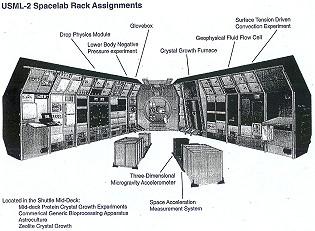 |
 |
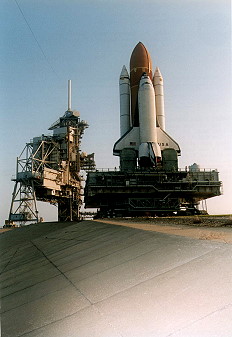 |
 |
 |
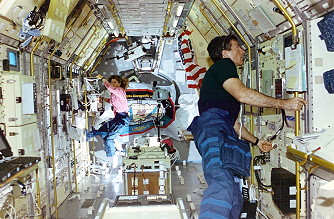 |
 |
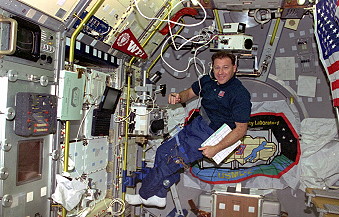 |
 |
 |
 |
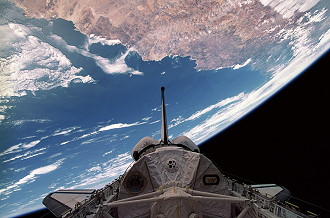 |
 |
| © |  |
Last update on June 21, 2023.  |
 |